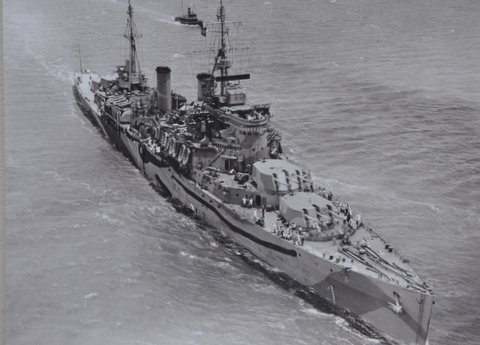Today (6th February 2022) marks the 80th anniversary of Convoy PQ11, the first Arctic Convoy to assemble and depart from Loch Ewe.
The convoy consisted of 13 merchant ships, 8 British, 2 Russian and one each from USA, Panama & Honduras. Empire Baffin, one of the British freighters was a CAM ship. CAM stood for Catapult Aircraft Merchantman, meaning she has a ramp over the bow on which a Hurricane fighter aircraft was mounted. This would be launched on a rocket sledge if a Luftwaffe reconnaissance plane was spotted, and would try to shoot it down, or drive it off. Either way it was a one way trip for the pilot as he was unlikely to reach land, and therefore had the choice of bailing out or ditching the aircraft, both into Arctic waters, hoping to being picked up by one of the escorts. The Hurricane was not launched on PQ11, and the pilot’s feet remained dry.
The one U.S. ship, City of Flint had previously been taken as a ‘prize’ on the high seas by the Deutschland in late 1939 and sailed to Murmansk, but was subsequently released after the U.S.A protested the arrest.
The convoy originally sailed to Kirkwall in the Orkneys to pick up its escort, sailing on from there on the 14th February.
The escort consisted of the minesweeper’s HMS Niger (Senior Officer Escort) & Hussar, two destroyers HMS Airedale & Middleton, and three armed trawlers. Later the convoy was joined by two Flower class corvettes, HMS Oxlip & Sweetbriar, the first time this new class of ship were involved with the Arctic convoys, and they would play an important role for the remainder of the campaign.
As the convoy approached Murmansk they were joined by the cruiser HMS Nigeria (pictured), escorted by two Soviet destroyers and three Royal Navy minesweeper. The convoy arrived in port without incident or loss on 22nd February.
All of the merchant ships returned to the UK as part of convoy QP9, departing Murmansk on 21st march. Subsequently two of the these ships were sunk on future Arctic convoys, Lowther Castle on PQ16, and Hartlebury on PQ17.


